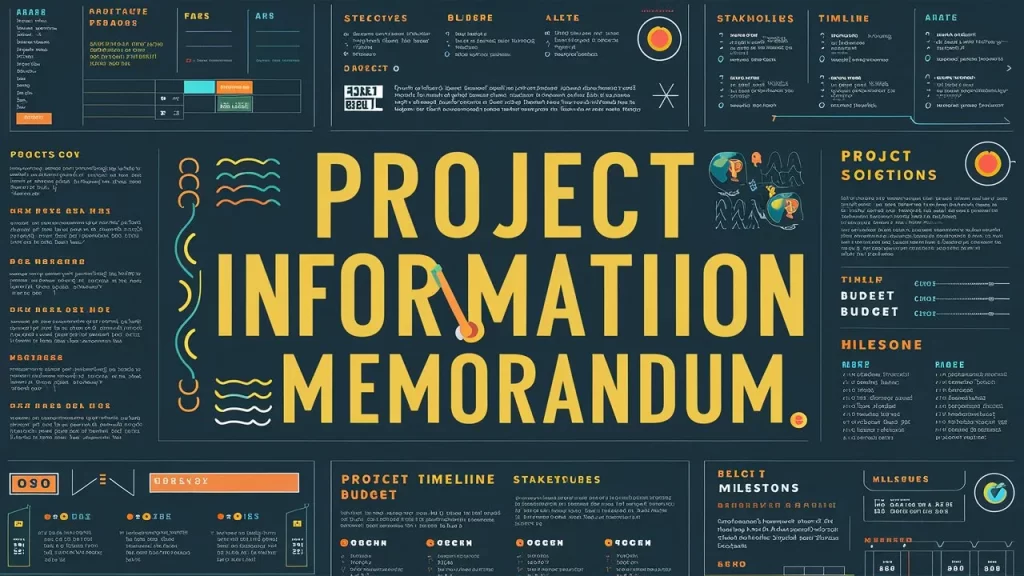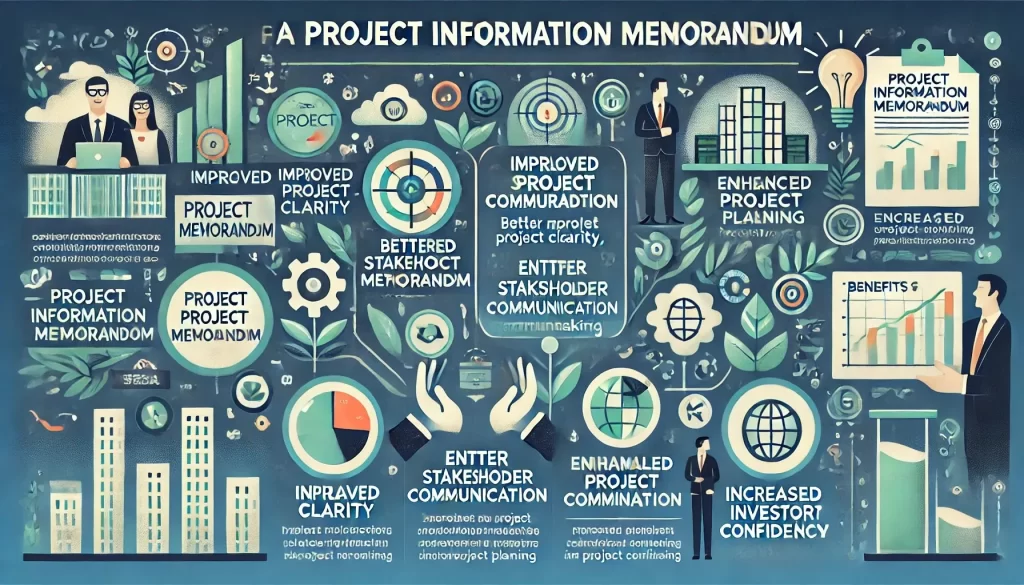Table of Contents
A Project Information Memorandum (PIM) is a crucial document that can spell the difference between success and failure for your project. It provides a comprehensive overview of a project to potential investors, stakeholders, and partners. This article will delve into the essentials of a Project Information Memorandum, explaining why it is vital and how it can unlock the secrets to your project’s success.
What is a Project Information Memorandum?
Defining a Project Information Memorandum
A Project Information Memorandum is a detailed document that outlines the key aspects of a project. It includes information about the project’s objectives, scope, timeline, financial projections, and potential risks. The main purpose of a PIM is to give potential investors and stakeholders a clear understanding of the project’s potential and how it will be executed.
Importance of a Project Information Memorandum
Having a well-prepared Project Information Memorandum is essential for securing funding and gaining the trust of stakeholders. It shows that you have a clear plan and have considered all aspects of the project. This document serves as a roadmap, guiding everyone involved towards the project’s successful completion.
Key Components of a Project Information Memorandum

Executive Summary
The executive summary is the first section of the PIM and provides a brief overview of the entire document. It should be concise yet compelling, highlighting the main points of the project. This section is critical as it sets the tone for the rest of the memorandum.
Project Description
The project description section should provide a detailed overview of the project. It includes the project’s background, objectives, and scope. This section should answer the fundamental questions of what the project is about, why it is being undertaken, and what it aims to achieve.
Market Analysis
A thorough market analysis is crucial for demonstrating the project’s potential. This section should include information about the target market, market size, growth potential, and competitive landscape. Highlighting market trends and opportunities can show investors the project’s viability.
Financial Projections
Financial projections are a critical part of the Project Information Memorandum. This section should include detailed financial statements, including income statements, cash flow statements, and balance sheets. Providing realistic and achievable financial forecasts can build investor confidence.
Risk Analysis
Risks are inherent to every project. The risk analysis section should identify potential risks and outline strategies for mitigating them. Being transparent about risks and having a plan to address them can help build trust with investors.
Management Team
The management team’s section should highlight the key members of the project team. It should include their qualifications, experience, and roles within the project. Showing that you have a competent and experienced team can reassure investors about the project’s potential for success.
Legal and Regulatory Considerations
In this section, provide details about any legal or regulatory issues relevant to the project. This could include permits, licenses, environmental regulations, and compliance requirements. Addressing these factors shows that you have considered all necessary legal aspects and are prepared to handle them.
Implementation Plan
An implementation plan outlines the steps required to execute the project successfully. This section should detail the project timeline, key milestones, and deliverables. It provides a clear roadmap for how the project will progress from start to finish, ensuring that all parties involved understand their roles and responsibilities.
Exit Strategy
For investors, understanding the exit strategy is crucial. This section should outline how investors can exit the project and realize their returns. It could include plans for an initial public offering (IPO), acquisition, or other exit mechanisms. A clear exit strategy demonstrates that you have thought through the entire lifecycle of the project.
How to Prepare a Project Information Memorandum
Research and Data Collection
The first step in preparing a Project Information Memorandum is thorough research and data collection. Gather all relevant information about the project, market, and financials. Accurate and comprehensive data is crucial for creating a compelling PIM.
Writing and Organizing the Document
Once you have all the necessary information, start writing and organizing the document. When writing a document, make sure to use plain, straightforward language that is easy to understand. Use headings and subheadings to organise the content and make it easier to read.
Reviewing and Revising
After drafting the PIM, review and revise it to ensure accuracy and clarity. Get feedback from other team members or stakeholders to identify any gaps or areas for improvement. A well-reviewed document can make a significant difference in its effectiveness.
Benefits of a Project Information Memorandum

Attracting Investors
A well-prepared Project Information Memorandum can attract investors by providing a clear and compelling overview of the project. It demonstrates that you have a solid plan and have considered all aspects of the project.
Facilitating Decision-Making
A PIM can facilitate decision-making by providing all the necessary information in one document. Stakeholders can use the information to make informed decisions about the project.
Enhancing Communication
Having a detailed Project Information Memorandum can enhance communication among the project team and stakeholders. It ensures that everyone is on the same page and has a clear understanding of the project.
Building Credibility
A comprehensive PIM builds credibility with investors and stakeholders. It shows that you have done your homework and are serious about the project. This can help gain the trust and support needed to move the project forward.
Streamlining Project Management
A PIM serves as a reference document for the project team, helping to streamline project management. It provides a clear outline of the project’s objectives, timeline, and milestones, ensuring that everyone is aligned and working towards the same goals.
Common Mistakes to Avoid
Lack of Clarity
One common mistake is a lack of clarity in the document. Ensure that the information is presented clearly and concisely. A reader may become confused if you utilise jargon or complicated language.
Incomplete Information
Another mistake is providing incomplete information. Make sure that all aspects of the project are covered in the PIM. Missing critical information can raise red flags for investors and stakeholders.
Unrealistic Projections
Providing unrealistic financial projections can damage your credibility. Make sure your financial estimates are both feasible and reasonable. Base your projections on thorough research and data.
Ignoring Risks
Failing to address potential risks can be a major oversight. Be transparent about the risks and provide strategies for mitigating them. This shows that you have a comprehensive understanding of the project and are prepared to handle challenges.
Overlooking the Management Team
The management team is a critical component of the PIM. Highlight the qualifications and experience of key team members to reassure investors that the project is in capable hands.
Real-Life Examples of Successful Project Information Memoranda
Case Study 1: Tech Startup
A tech startup looking to develop a new software product used a detailed Project Information Memorandum to secure funding from venture capitalists. The PIM included a comprehensive market analysis, realistic financial projections, and a clear implementation plan. The investors were impressed by the thoroughness of the document and the expertise of the management team, leading to a successful funding round.
Case Study 2: Real Estate Development
A real estate development company used a PIM to attract investment for a new commercial property project. The document highlighted the project’s potential returns, provided a detailed market analysis, and included a robust risk mitigation strategy. The clarity and depth of the PIM helped the company secure the necessary funding and support from stakeholders.
Case Study 3: Renewable Energy Project
A renewable energy company prepared a PIM to secure funding for a new solar farm project. The PIM included detailed financial projections, a comprehensive risk analysis, and an overview of the regulatory landscape. The investors appreciated the thoroughness of the document and the clear plan for project execution, leading to a successful investment.
Tips for Creating a Compelling Project Information Memorandum
Start with a Strong Executive Summary
The executive summary is your first opportunity to make an impression. Make sure it is compelling and provides a clear overview of the project. Highlight the key points and ensure it captures the reader’s attention.
Use Clear and Simple Language
Use clear and simple language to ensure that the document is easy to understand. This will help ensure that the information is accessible to all stakeholders.
Be Transparent and Honest
Transparency and honesty are crucial when preparing a PIM. Be upfront about the risks and challenges associated with the project. Providing a realistic and honest assessment can help build trust with investors and stakeholders.
Include Visuals and Graphics
Including visuals and graphics can help make the document more engaging and easier to understand. Use charts, graphs, and diagrams to illustrate key points and provide a visual representation of the information.
Tailor the Document to Your Audience
Consider your audience when preparing the PIM. Tailor the document to meet the needs and interests of your potential investors and stakeholders. This will help ensure that the information is relevant and compelling.
| Tip | Description |
|---|---|
| Clear Objective | Define the main objective of the project clearly and concisely. |
| Executive Summary | Provide a brief overview of the project, including key points and objectives. |
| Detailed Project Description | Include a comprehensive description of the project, its purpose, and its expected impact. |
| Market Analysis | Conduct a thorough market analysis to show the project’s relevance and potential success. |
| Financial Projections | Present realistic financial projections and expected returns on investment. |
| Risk Analysis | Identify potential risks and provide strategies for mitigating them. |
| Team Credentials | Highlight the qualifications and experience of the project team members. |
| Visual Aids | Use charts, graphs, and images to support your data and make the document visually appealing. |
| Conclusion and Call to Action | End with a strong conclusion and a clear call to action for potential investors or stakeholders. |
Read more about Business Information.
Final Thought
A Project Information Memorandum is a powerful tool for unlocking the secrets to your project’s success. By providing a comprehensive overview of the project, it can attract investors, facilitate decision-making, and enhance communication. By avoiding common mistakes and preparing a clear and detailed document, you can set your project on the path to success. A well-prepared Project Information Memorandum can be the key to unlocking your project’s full potential, ensuring that you have the support and resources needed to achieve your goals.
Creating a Project Information Memorandum requires careful planning, thorough research, and clear communication. By following the tips and best practices outlined in this article, you can create a compelling and effective PIM that will help you secure funding, build credibility, and drive your project to success. Whether you are working on a tech startup, real estate development, or renewable energy project, a well-prepared PIM can make all the difference in achieving your project objectives.




